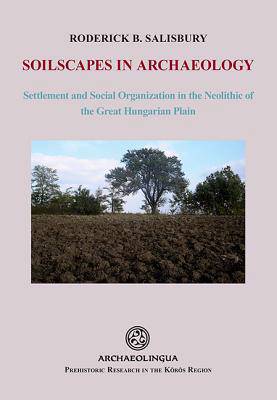
- Afhalen na 1 uur in een winkel met voorraad
- Gratis thuislevering in België vanaf € 30
- Ruim aanbod met 7 miljoen producten
- Afhalen na 1 uur in een winkel met voorraad
- Gratis thuislevering in België vanaf € 30
- Ruim aanbod met 7 miljoen producten
Zoeken
Soilscapes in Archaeology
Settlement and Social Organization in the Neolithic of the Great Hungarian Plain
Roderick B Salisbury
€ 94,95
+ 189 punten
Omschrijving
The places around us are an integral part of our social life. Daily activities are associated with specific living and working areas, and these associations create patterns that reflect the way people behave within defined spaces. Cooking, storage, craftwork, waste disposal, and other daily tasks take place in culturally accepted spaces. These everyday activities leave chemical and geophysical traces in the soil, creating cultural soilscapes. In this book, the author uses the soilscapes from small Late Neolithic and Early Copper Age settlements in the Körös Region of the Great Hungarian Plain to explore the relationship between spatial distributions and community organization during the major social and economic transformations that occurred at the turn of the Neolithic and Copper Age. Focusing on soil, rather than on artifact distributions or architecture, reveals patterns of continuity in spatial organization at small settlements. This contrasts with the spatial organization at large, nucleated Late Neolithic settlements, which differs considerably. The proposed model of household clusters and activity zones provides a framework for understanding shifts in spatial structure as they relate to social organization, and will prove useful in other regions and periods of cultural transformation.
Specificaties
Betrokkenen
- Auteur(s):
- Uitgeverij:
Inhoud
- Aantal bladzijden:
- 329
- Taal:
- Engels
- Reeks:
Eigenschappen
- Productcode (EAN):
- 9789639911796
- Verschijningsdatum:
- 22/11/2016
- Uitvoering:
- Hardcover
- Formaat:
- Genaaid
- Afmetingen:
- 198 mm x 284 mm
- Gewicht:
- 1202 g

Alleen bij Standaard Boekhandel
+ 189 punten op je klantenkaart van Standaard Boekhandel
Beoordelingen
We publiceren alleen reviews die voldoen aan de voorwaarden voor reviews. Bekijk onze voorwaarden voor reviews.








